
Roots
In the quiet spaces of our shared human story, where whispers of wisdom linger like the gentle scent of shea, a profound conversation unfolds. It is a dialogue about hair, specifically the coiling, spiraling, and resilient strands that grace Black and mixed-race heads. This is not merely a scientific inquiry; it is a spiritual homecoming, a return to the very soul of a strand, tracing how ancestral care practices resonate with and shape the vibrancy of modern textured hair health.
The journey begins with the earth beneath our feet, the plants that nourished our foremothers, and the hands that braided stories into being. It is about understanding the very fabric of our being, written in each curl, coil, and wave, and how this heritage guides our present and future.

Hair Anatomy and Ancient Wisdom
To truly grasp the interplay between ancestral practices and contemporary textured hair health, one must first recognize the intrinsic nature of the hair itself. Textured hair, often characterized by its elliptical follicle shape and unique growth pattern, differs significantly from straight hair. This distinction is not a flaw, but a design feature, a testament to evolutionary adaptation.
Consider the work of Jablonski and Chaplin (2014) who theorize that tightly curled hair, common in many African populations, offered a significant advantage in reducing heat gain from sun exposure, safeguarding the brain from thermal stress. This scientific insight provides a grounding for what our ancestors instinctively knew ❉ their hair offered protection, demanding specific care to maintain its integrity.
In ancient civilizations, the understanding of hair’s physical properties, while not articulated through modern microscopy, was deeply empirical. They recognized that hair, especially when coiling, tended to be more susceptible to dryness and breakage without adequate moisture and gentle handling. This observation led to practices centered on preservation and nourishment.
They understood that a strand’s well-being was not separate from the body’s overall vitality, a holistic view that modern wellness advocates echo. The emphasis was always on working with the hair’s natural inclination, not against it, a fundamental principle of ancestral wisdom.
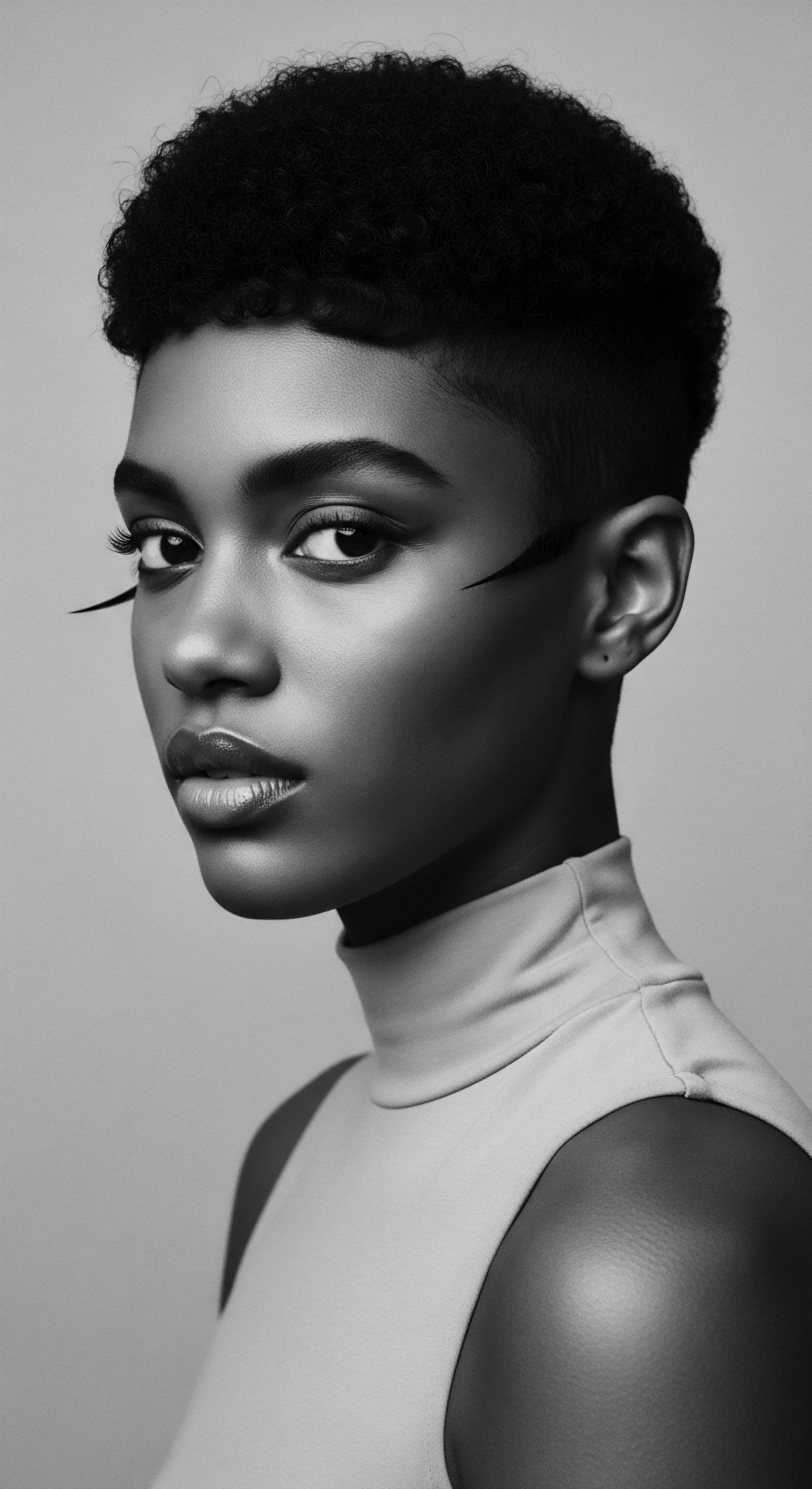
Classification Systems and Cultural Foundations
While modern hair classification systems (like the Andre Walker hair typing system) attempt to categorize textured hair based on curl pattern, these systems often fall short of capturing the immense diversity within Black and mixed-race hair. More importantly, they rarely acknowledge the historical and cultural nomenclature that predates contemporary classifications. For centuries, various African societies identified hair types and styles not by numbers or letters, but by their connection to spiritual beliefs, social status, and communal identity. For instance, in pre-colonial African societies, hair styles could signify a person’s tribe, social status, and marital status.
The very act of classifying hair was often a communal affair, performed by skilled practitioners who understood the nuances of each person’s hair and its place within the collective. This was a lived, tactile classification, not a theoretical one. The traditional lexicon included terms for textures, lengths, and styles that communicated deep meaning within a community, providing a rich context for understanding individual hair types and their significance. This traditional knowledge reminds us that hair is not merely a biological entity; it is a living archive of identity and belonging.
Ancestral hair practices, guided by astute observation and deep reverence for nature, provided foundational insights into textured hair’s unique needs, long before modern science offered its explanations.
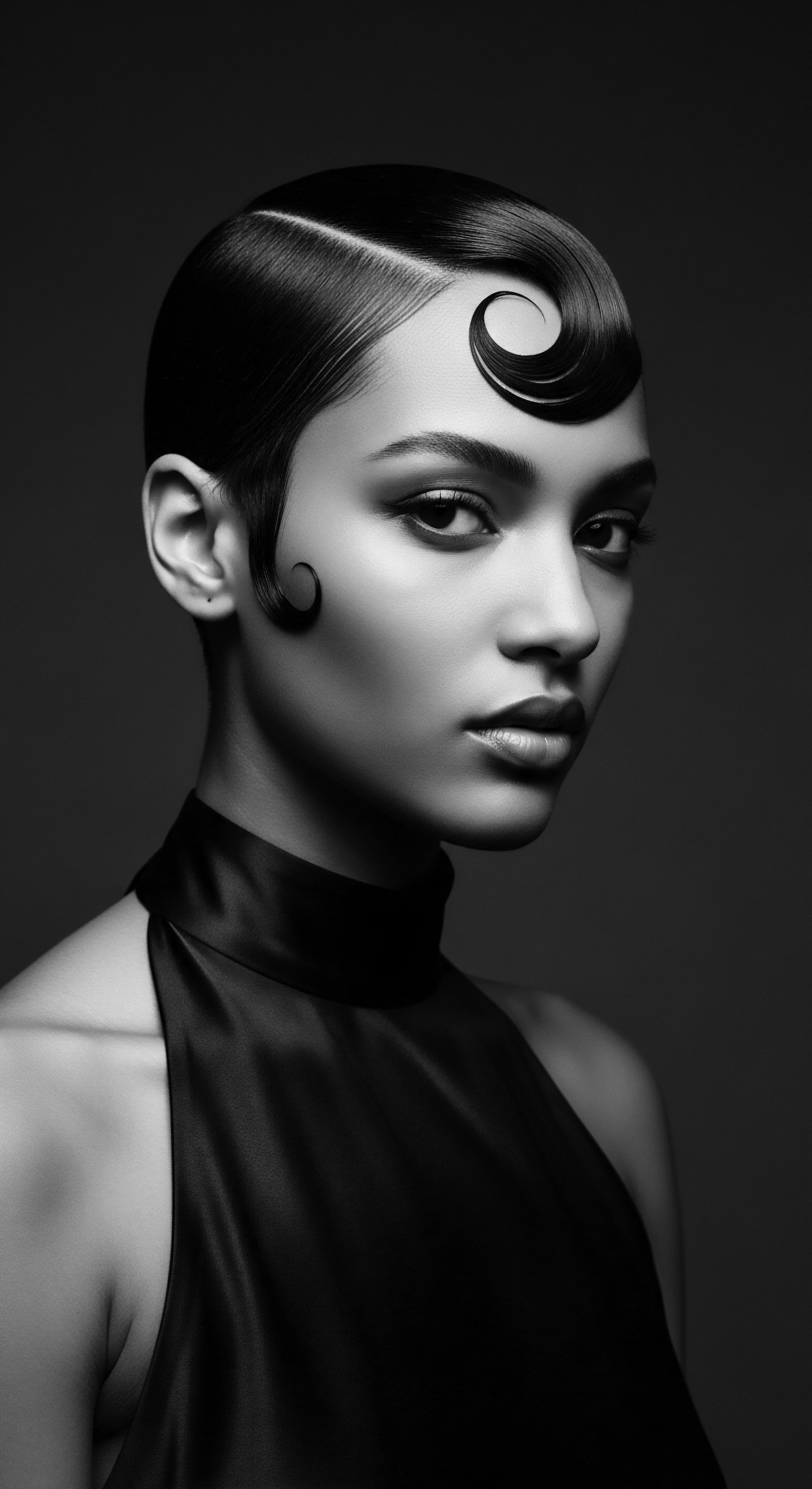
An Ancient Lexicon of Hair Care
The language surrounding textured hair in ancestral communities was rich with terms that spoke to both its aesthetic and spiritual significance. The tools and techniques of old had names that reflected their purpose and the reverence held for hair. Combs, for example, were not just detangling devices. In some African cultures, the comb held cultural meaning, indicating one’s particular group, spiritual symbolism, personal history, and class status (Fashola & Abiodun, 2023, p.
2). Such implements were often carved with symbols, embodying generations of artistry and function. This deep connection to tools and terminology highlights a historical context for the tools we use today, urging us to consider their lineage and purpose.
Traditional terms for specific styles, such as “cornrows” (known as “canerows” in some diaspora regions), carried profound cultural and even strategic meaning. During the transatlantic slave trade, cornrow patterns were used to create maps and directions for escape, transforming hair into a quiet act of resistance and preservation of African identity. This history underscores that the lexicon of textured hair is not simply descriptive; it is deeply political and deeply human. It speaks to the enduring power of hair as a medium for communication, defiance, and survival.
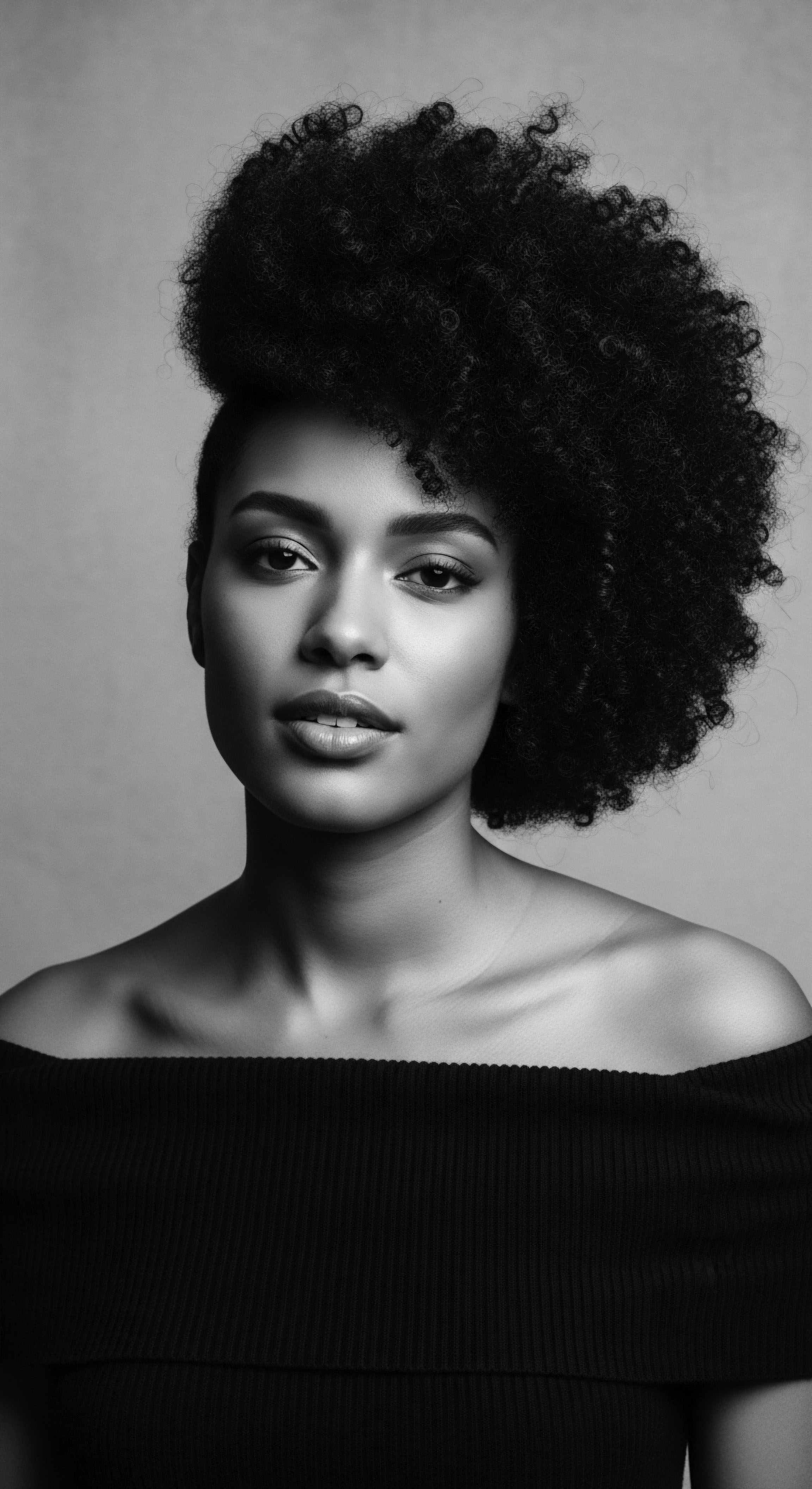
Growth Cycles and Environmental Echoes
Hair growth cycles, from the active anagen phase to the resting telogen phase, are universal, but the environmental factors that historically shaped these cycles in African and mixed-race communities were often distinct. Ancestral populations, particularly in sub-Saharan Africa, lived in climates characterized by intense sun exposure and varying humidity. Their diets, based on local flora and fauna, naturally provided the vitamins, minerals, and proteins essential for robust hair growth.
For example, the widespread use of nutrient-dense ingredients like shea butter, coconut oil, and various plant extracts in traditional African hair care reflects a deep understanding of external protection and internal nourishment. Shea butter, derived from the nuts of the African shea tree, provides immense moisture and protection from harsh environmental elements. This reliance on locally available, natural resources speaks to an ecological wisdom that integrated hair care within a broader system of well-being, acknowledging how diet, environment, and physical care all contributed to the vitality of a strand. Modern hair science increasingly validates the efficacy of these traditional ingredients, noting their molecular structures allow for deep penetration and nourishment of the hair shaft (Fabulive, 2024).
| Ancestral Concept Hair as a protective crown against climate. |
| Modern Scientific Link Tight curls offer thermoregulation, reducing heat absorption from sunlight (Jablonski & Chaplin, 2014). |
| Ancestral Concept Hair care as communal ritual. |
| Modern Scientific Link Social connection impacts mental health, indirectly influencing stress-related hair conditions. |
| Ancestral Concept Use of natural butters and oils. |
| Modern Scientific Link Scientific studies validate deep moisturizing and protein loss prevention from lauric acid-rich oils like coconut oil. |
| Ancestral Concept Hair as a map or communication tool. |
| Modern Scientific Link Cornrows during slavery communicated routes and messages, demonstrating strategic function. |
| Ancestral Concept Scalp massage for hair growth. |
| Modern Scientific Link Stimulates blood circulation to follicles, delivering essential nutrients (Ayurda, 2024). |
| Ancestral Concept The enduring wisdom of ancestral practices reveals a continuity with modern scientific understanding, rooted in centuries of observation and adaptation. |

Ritual
The journey from elemental biology to the expressive world of styling reveals another layer of ancestral influence on modern textured hair health. Here, hair moves beyond its biological function to become a canvas, a statement, and a living extension of identity. The rituals of styling, from intricate braids to adorned coils, were not merely cosmetic.
They were acts of preservation, communication, and celebration, deeply embedded in the social and spiritual life of communities. These time-honored practices, refined over generations, continue to inform the techniques, tools, and transformations we apply to textured hair today, carrying forward a rich heritage of care and artistry.

Protective Styles Through the Ages
Protective styles stand as a testament to the ingenuity and practical wisdom of ancestral communities. Braids, twists, and locs, far from being fleeting trends, possess a history spanning millennia, originating in African cultures as early as 3500 BCE. These styles were not only functional, shielding hair from environmental aggressors and breakage, but they also served as intricate social markers. They could convey a person’s age, marital status, tribal affiliation, wealth, and even spiritual beliefs.
The resilience of these styles became profoundly evident during the transatlantic slave trade. Stripped of their tools and cultural practices, enslaved Africans adapted, using braids as covert communication channels—maps to freedom woven into hair, or as a means to carry rice seeds for survival during harrowing journeys (BLAM UK CIC, 2022). This period highlights a crucial aspect of their legacy ❉ protective styles were acts of survival, symbols of resistance, and a means to cling to a fragmented yet enduring heritage. Today, the foundational principles of these styles—minimizing manipulation, protecting ends, and retaining moisture—remain paramount for modern textured hair health, offering a bridge to our collective past.

How Do Ancient Braiding Techniques Benefit Contemporary Hair Care?
Ancient braiding techniques, beyond their aesthetic appeal, provided a mechanism for low-tension hair management. By carefully sectioning and weaving hair, these methods distributed tension evenly across the scalp, reducing strain on individual follicles. This contrasts sharply with some modern styles that can place undue stress on the hairline, leading to traction alopecia.
The art of braiding, as passed down through generations, emphasized neatness and gentle handling, ensuring that hair was not pulled too tightly. This mindful approach to styling minimized breakage, a concern for textured hair which, due to its coiling structure, can be more prone to tangling and fragility.
Furthermore, traditional braiding often involved applying natural oils and butters directly to the scalp and strands before or during the braiding process. This practice sealed in moisture, adding a protective layer against environmental factors. The enclosed nature of braids also helped retain this moisture for longer periods, preventing dryness. Contemporary stylists and enthusiasts often replicate these principles, recognizing that well-executed braids, twists, and locs remain highly effective strategies for length retention and overall hair well-being.
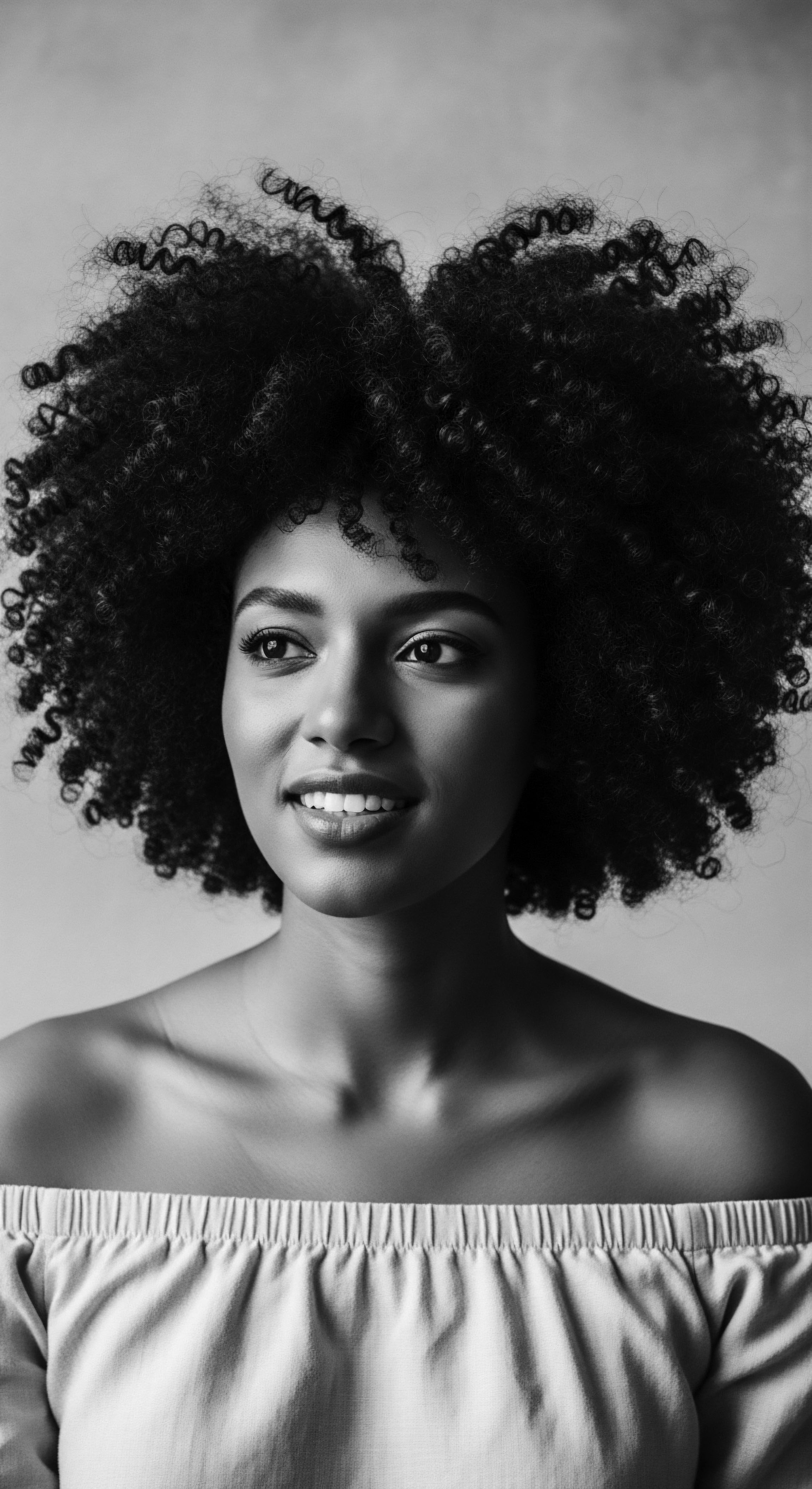
Natural Styling and Definition Echoes
The pursuit of natural texture definition is a central theme in modern textured hair care, yet its roots stretch back to ancestral traditions. Before the advent of chemical relaxers and hot combs, hair was styled to celebrate its natural curl patterns. Techniques such as finger coiling, knotting (like Bantu knots), and twisting were employed to enhance and organize the hair’s inherent shape. These methods relied on the hair’s natural elasticity and curl memory, often aided by water and natural emollients like shea butter or plant-based gels.
The practice of “hair oiling,” deeply embedded in Ayurvedic traditions of India but also found in various African practices, serves as a powerful example of how ancestral wisdom directly informs modern textured hair health. Regular scalp massages with warmed, herbal-infused oils were, and remain, a core component. This practice not only nourishes the scalp and hair from within, but also stimulates blood circulation, promoting healthy hair growth and reducing breakage.
The molecular structure of certain oils, particularly those rich in lauric acid like coconut oil, allows them to penetrate the hair shaft, preventing protein loss and reducing damage (Fabulive, 2024). This ancient ritual offers a simple yet profound method for maintaining moisture and promoting vitality in textured hair, qualities highly valued in modern routines.
The historical use of protective styles and natural hair definition techniques served as vital acts of preservation and cultural expression, principles that continue to guide modern textured hair care.

A Full Toolkit Through Time
The tools employed in ancestral hair care, though simpler in form, shared a common purpose with their modern counterparts ❉ to cleanse, detangle, style, and protect. Early tools included combs carved from wood, ivory, or bone, and even sharpened stones or flint blades for trimming. These rudimentary instruments reflect an era when hairstyling was deeply integrated with natural resources and artisanal skill. For example, ancient Egyptians used metal shears made from copper or bronze for cutting hair, marking an early phase of precision tools.
The evolution of styling tools, while accelerating with industrialization, often builds upon the foundational principles of ancestral implements. Early curling irons, heated over fire, share a lineage with modern ceramic wands, both aiming to manipulate hair texture with heat, albeit with vastly different safety profiles (Naturtint USA, 2022). Similarly, traditional hair picks, designed with long teeth and rounded tips, were specifically crafted to untangle African textured hair, demonstrating an early understanding of hair’s unique structure and needs (Fashola & Abiodun, 2023, p.
2). The continuity of purpose, even as materials and technology change, speaks to an enduring heritage of thoughtful hair management.
Here are some examples of ancestral hair tools and their contemporary echoes:
- Combs and Picks ❉ Ancestral combs, often carved with cultural symbols, served to detangle and groom. Modern wide-tooth combs and Afro picks continue this legacy, designed to navigate the intricate patterns of textured hair without causing undue stress.
- Hair Oils and Balms ❉ Natural oils from shea, coconut, and castor were primary conditioning agents. Today, these same botanical extracts form the foundation of many conditioners, leave-ins, and deep treatments, often fortified with scientific understanding of their benefits.
- Styling Aids ❉ Ancient societies used plant resins, clays, and water for setting styles. Modern gels, creams, and mousses draw upon similar principles of hold and definition, albeit with advanced formulations.
The deep-seated connection between traditional tools and modern hair care illustrates how the ancestral ingenuity continues to shape our approach to textured hair health. Each tool, whether ancient or new, tells a story of adapting, creating, and preserving a heritage of beauty and resilience.

Relay
The continuation of heritage in hair care is a dynamic interplay, a relay race where ancestral wisdom passes the baton of knowledge to contemporary practices. This section delves into the sophisticated ways in which traditional understanding of hair health and holistic well-being directly informs modern regimens, nighttime rituals, and problem-solving for textured hair. Here, the ancestral becomes the advanced, as scientific inquiry often validates the efficacy of age-old remedies, revealing a profound and continuous cultural legacy.

Building Personalized Regimens with Ancient Insight
Modern hair care emphasizes personalized regimens, a concept deeply rooted in ancestral wisdom. Traditional African societies, for example, did not apply a one-size-fits-all approach to hair. Care was often tailored to an individual’s age, social status, and lifestyle, as well as the specific needs of their hair texture and current environmental conditions. This inherent flexibility and responsiveness to individual needs directly informs the contemporary call for customized routines for textured hair, recognizing that porosity, density, and curl pattern all influence how hair responds to products and practices.
The layering of natural ingredients—oils for moisture, butters for sealing, and herbal rinses for scalp health—was a common ancestral practice. Today, this translates to the popular “LOC” or “LCO” method (Liquid, Oil, Cream), which systematizes the application of products to maximize moisture retention in textured hair. The efficacy of these layering techniques echoes centuries of communal knowledge regarding moisture management, a paramount concern for hair types prone to dryness.

The Nighttime Sanctuary and Bonnet Wisdom
The practice of protecting hair during sleep is not a contemporary invention; it is a direct inheritance from ancestral customs. Historically, head coverings, often made of natural fibers, served multiple purposes beyond modesty or ceremony. They shielded styled hair from dust, maintained neatness, and, crucially, preserved moisture overnight. For textured hair, which can lose moisture rapidly to absorbent fabrics like cotton, this practice was vital for maintaining hydration and preventing tangles and breakage.
The modern satin or silk bonnet, a staple in many textured hair care routines, directly descends from this ancestral wisdom. The smooth surface of these fabrics minimizes friction, reducing frizz and preserving the hair’s natural oils, allowing hair to remain soft and pliable (Ayurda, 2024). This simple yet effective tool represents a direct, unbroken chain of knowledge connecting current hair health strategies to the preventative measures taken by our foremothers, reinforcing the importance of consistent, gentle care.

How Do Traditional Head Coverings Influence Modern Textured Hair Health?
Traditional head coverings, such as those worn by women across various African cultures, exerted a profound influence on modern textured hair health by providing essential protection. These coverings, sometimes intricately wrapped, kept hair clean, shielded it from environmental elements like sun and dust, and prevented mechanical damage during daily activities or sleep. The material choice often reflected local resources, with natural fibers allowing for breathability while still offering a protective barrier.
In contemporary settings, the principles of these historical coverings are replicated through materials like satin and silk. These smooth fabrics reduce the friction that cotton or other rougher materials can create, thereby minimizing breakage, split ends, and tangling. For textured hair, which is inherently more prone to dryness and breakage due to its structural characteristics, this friction reduction is critical for preserving the cuticle layer and maintaining overall hair integrity. Thus, the wisdom embedded in ancestral practices of head covering directly translates to the use of modern hair bonnets and pillowcases, underscoring a continuous commitment to preserving hair vitality.

Ingredients ❉ A Shared Heritage of Nourishment
The deep dives into ingredients, a hallmark of modern hair care, reveal a profound reliance on botanicals and natural compounds honored for centuries. Ancestral communities cultivated a vast understanding of their local pharmacopeia, identifying plants and natural resources with properties beneficial for hair and scalp health. Shea butter, sourced from the shea tree native to West Africa, has been used for centuries for its conditioning and protective qualities. Its moisturizing properties are now scientifically attributed to its rich fatty acid profile.
Similarly, coconut oil, a staple in Ayurvedic traditions and various African regions, has been used for millennia to condition and strengthen hair. Modern research confirms its high lauric acid content, which can penetrate the hair shaft, preventing protein loss. Other examples include ❉
- Amla (Indian Gooseberry) ❉ Used in Ayurvedic practices for centuries, modern studies indicate its antioxidant properties and potential to address graying hair (PMC, 2023).
- Castor Oil ❉ A staple in ancient Egyptian hair care, valued for moisturizing and strengthening hair.
- Chebe Powder ❉ Hailing from Chad, this traditional blend of herbs has gained modern recognition for its moisture-retaining properties, which aid in length retention for textured hair.
This enduring use of natural ingredients, validated by contemporary scientific analysis, showcases a powerful continuum of knowledge. Our ancestors intuitively understood plant properties, and modern science now explains the mechanisms, allowing for a more informed yet still heritage-rooted approach to hair care.
| Traditional Ingredient Shea Butter |
| Ancestral Use Moisturizing, protecting hair and scalp from sun. |
| Modern Application and Scientific Validation Emollient in conditioners, creams. Rich in fatty acids for deep hydration. |
| Traditional Ingredient Coconut Oil |
| Ancestral Use Conditioning, strengthening hair, reducing protein loss. |
| Modern Application and Scientific Validation Pre-poo, deep conditioner, sealant. Lauric acid penetrates hair shaft. |
| Traditional Ingredient Castor Oil |
| Ancestral Use Promoting hair growth, adding shine, moisturizing. |
| Modern Application and Scientific Validation Hair growth serums, scalp treatments. Rich in ricinoleic acid, a fatty acid. |
| Traditional Ingredient Amla (Indian Gooseberry) |
| Ancestral Use Nourishing scalp, preventing premature graying. |
| Modern Application and Scientific Validation Hair masks, oils. Antioxidant properties, high in Vitamin C. |
| Traditional Ingredient Black Soap |
| Ancestral Use Cleansing scalp and hair, rich in vitamins. |
| Modern Application and Scientific Validation Natural shampoo alternative. Contains Vitamin A and E, gentle cleansing. |
| Traditional Ingredient The enduring efficacy of these natural compounds highlights a profound continuity between ancestral wisdom and contemporary hair science. |
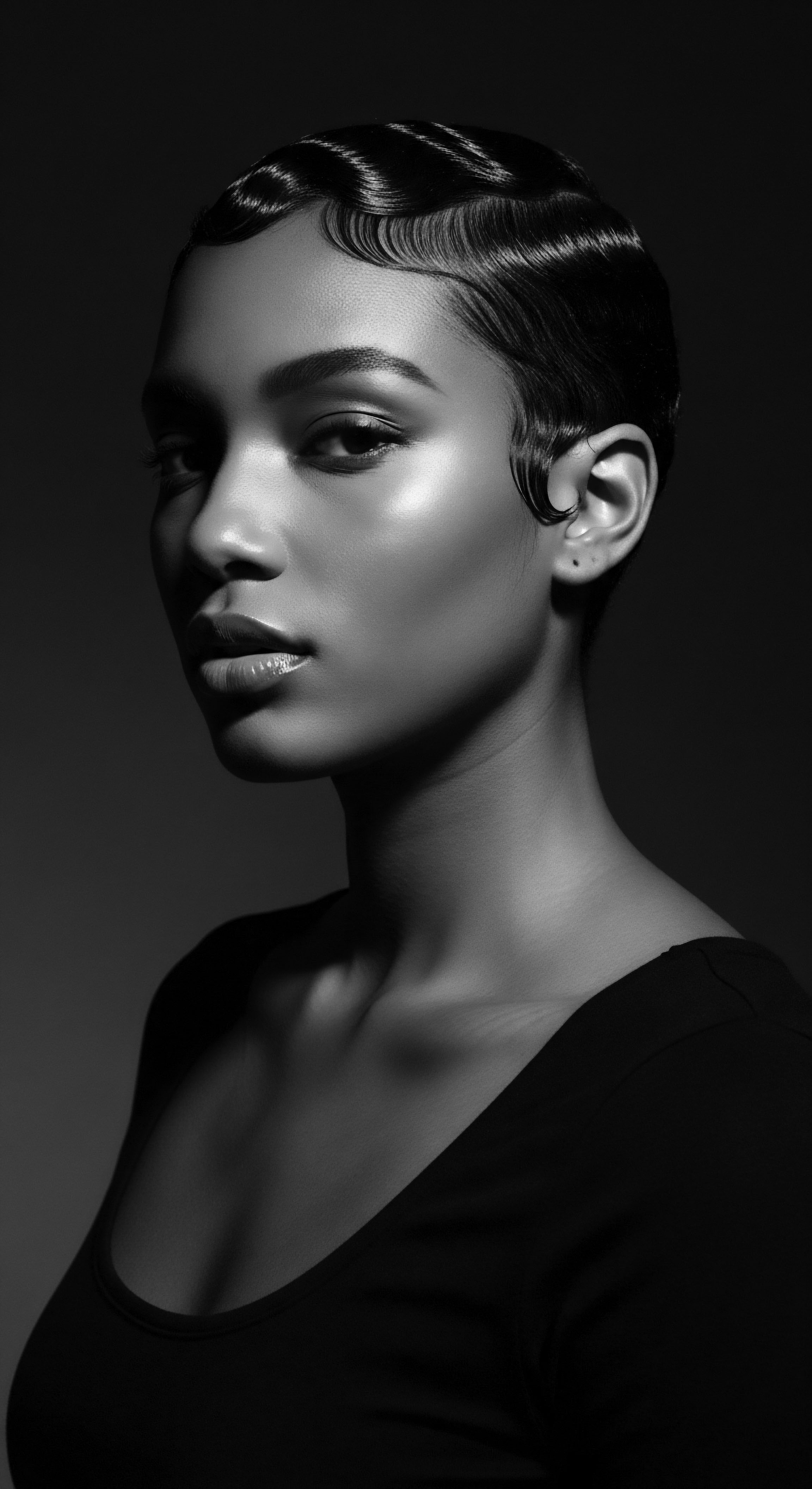
Holistic Influences on Hair Well-Being
The concept of holistic well-being, where hair health is viewed as an extension of overall physical and mental state, is a cornerstone of ancestral philosophies. In many traditional African societies, hair care was intertwined with communal life, spirituality, and identity. The communal braiding sessions, for example, were not merely cosmetic appointments; they were social gatherings, opportunities for storytelling, mentorship, and shared experience. This collective act fostered a sense of belonging and well-being, which, while not directly measurable in terms of hair growth, undeniably contributed to a holistic sense of health.
Stress, diet, and lifestyle choices were intuitively understood to impact hair. Ancient wellness systems like Ayurveda in India linked hair health to internal balance and bodily humors. Modern trichology now substantiates these connections, recognizing the impact of nutrition, stress levels, and systemic health on hair vitality and growth cycles. This alignment demonstrates that while the vocabulary may have changed, the fundamental understanding of hair as a reflection of internal harmony remains a powerful ancestral legacy, guiding a more comprehensive approach to textured hair health today.
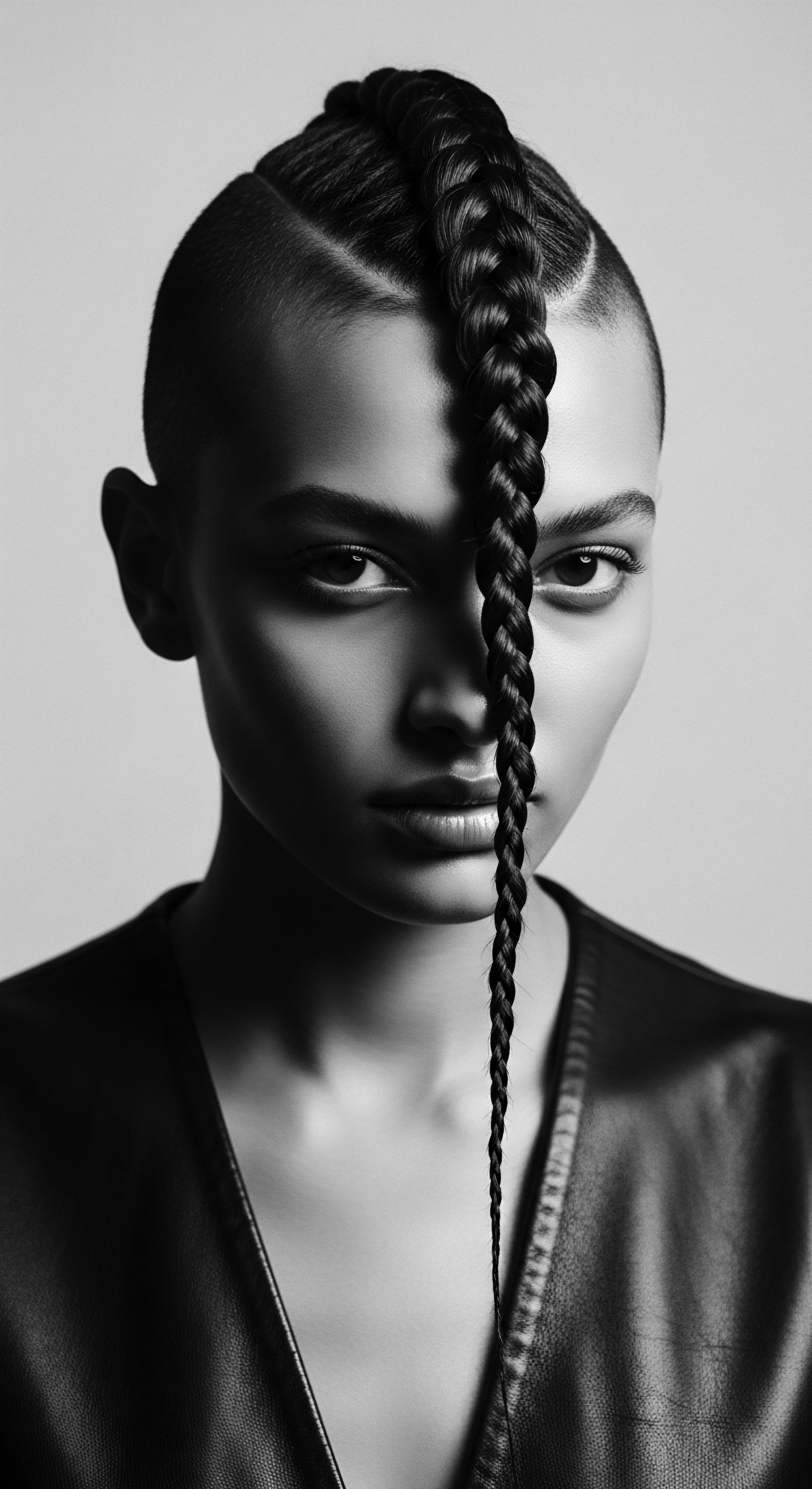
Reflection
To stand at the precipice of textured hair care in the modern age means to look backward and forward in equal measure. It means recognizing that the vibrancy of a strand, its ability to coil and thrive, is not a new discovery, but a testament to an enduring heritage. The wisdom held within ancestral hair practices is far from obsolete; it is a living, breathing archive, constantly informing and enriching our contemporary understanding. The journey of textured hair is not a linear progression from primitive to advanced, but a cyclical return to foundational truths—truths about nourishment, protection, and identity.
Each carefully chosen ingredient, each gentle technique, each protective style carries the echoes of hands that have cared for generations before us. This continuous dialogue between past and present ensures that the soul of a strand remains unbound, a symbol of resilience, beauty, and a deeply rooted legacy that continues to inspire and guide our collective hair journeys.

References
- Byrd, A. D. & Tharps, L. (2014). Hair Story ❉ Untangling the Roots of Black Hair in America. St. Martin’s Press.
- Chaplin, G. (2004). The Evolution of Human Skin Coloration. Annual Review of Anthropology, 33(1), 585-608.
- Dove, D. & Powers, J. (2018). Hair and Identity in the African Diaspora ❉ A Global Perspective. Routledge.
- Essel, S. (2021). The Makai Hairstyle of Elmina ❉ A Historical Perspective. International Journal of Arts and Social Science, 4(7), 173-181.
- Fashola, J. O. & Abiodun, H. O. (2023). The Ontology of Hair and Identity Crises in African Literature. IASR Journal of Humanities and Social Sciences, 3(1), 1-13.
- Jablonski, N. G. & Chaplin, G. (2014). The Evolution of Human Skin and Hair Color. Evolution of Human Skin and Hair Color. John Wiley & Sons.
- Johnson, D. & Bankhead, A. (2014). Hair Story ❉ The Cultural History of Black Hair. New York ❉ St. Martin’s Press.
- Mercer, K. (1987). Black Hair/Style Politics. New Formations, 3(1), 33-51.
- McIlvaine, E. (2014). The Ayurvedic Hair Care Handbook. Lotus Press.
- Omotos, A. (2018). The Cultural Significance of Hair in Ancient African Civilizations. Journal of Pan African Studies, 11(5), 18-32.
- Sieber, R. W. & Herreman, D. (2000). Hair in African Art and Culture. Museum for African Art.
- Sultana, Y. Kohli, K. Athar, M. & Khar, R. K. (2007). Effect of pre-treatment of almond oil on ultraviolet B–induced cutaneous photoaging in mice. Journal of Cosmetic Dermatology, 6(1), 14-19.
- Thompson, E. (2008). Hair Story ❉ Beauty, Culture, and the Politics of Black Women’s Hair. New York University Press.
- White, L. (2000). Speaking with Vampires ❉ Rumor and History in Colonial Africa. University of California Press.
